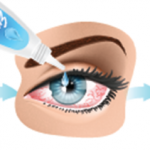
As a medical student, I was not prone to diagnosing myself with the “disease du jour.” A distance swimmer and triathlete, I imagined myself to be one of the least likely people to develop a chronic disease in the prime of my life. But it happened.
In retrospect, there were warning signs. My eyes had been dry and irritated since adolescence. An unusual fatigue had been building for years. At age 44, following a minor surgical procedure on an injured disc, my health disintegrated suddenly and rapidly. I developed overwhelming fatigue, constant migraines, abdominal pain, nausea, and diarrhea. It felt as though every cell in my body was soaking in a toxic marinade. At first, this seemed to be caused by a medication reaction. Yet the puzzling array of symptoms worsened as the months went by.
None of my doctors suspected Sjögren’s syndrome, despite a suggestive history, including punctual cautery for severe dry eyes, chronic sinusitis, muscle pain, and stubborn tendonitis affecting multiple joints. After an unremarkable gastrointestinal workup, I was told that I probably had a severe form of irritable bowel syndrome. It was obvious to me that something much more serious was going on and it was not just affecting my gut.
One year into this ordeal, I had done enough research to suspect Sjögren’s as the probable culprit. Despite testing negative for Sjögren’s antibodies, I insisted on a rheumatology referral and a minor salivary gland biopsy. The biopsy was abnormal, yet it was discounted because of a low focus score. Despite an unclear diagnosis, I started prednisone. In just a matter of days, my gastrointestinal symptoms remarkably improved. So much for irritable bowel!
I have had the good fortune to work with an excellent rheumatologist who was willing to treat me in those early years as “probable Sjögren’s,” based on the clinical picture. Seven years into the illness, a second salivary gland biopsy confirmed my diagnosis.
The Problem with Diagnosis
Most people in my situation would have been told that they did not have Sjögren’s. I know women with similar stories who were told their symptoms were due to stress or menopause (90% of patients with Sjögren’s are women). Because depression, thyroid disease, celiac, and fibromyalgia are common comorbidities in patients with Sjögren’s, they can distract providers from looking for an underlying cause that connects the scattered symptoms.


